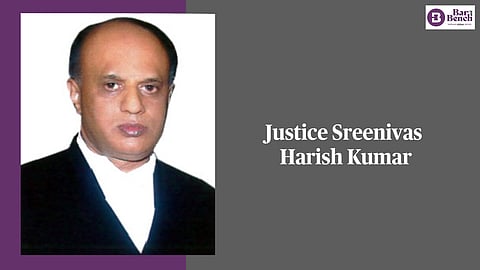
- Latest Legal News
- News
- Dealstreet
- Viewpoint
- Columns
- Interviews
- Law School
- Legal Jobs
- हिंदी
- ಕನ್ನಡ

The Karnataka High Court recently issued a slew of guidelines to be followed by trial courts while examining accused and recording their statements under Section 313 of the Code of Criminal Procedure (CrPC) [Meenakshi and anr vs State of Karnataka].
The Court among other things said that the questions to the accused must be framed in simple language and only incriminatory evidence must be picked out from oral and documentary evidence.
The judgment was delivered by Justice Sreenivas Harish Kumar while hearing a petition by two persons, Meenakshi and Thrinethra challenging the refusal by the sessions judge to record statements and mandating that they answer in a single word, i.e., "true or false".
The guidelines issued are as follows:
Only the incriminatory evidence must be picked out from oral and documentary evidence;
The questions must be framed in simple language, as far as possible in short sentences;
The attention of each accused must be drawn to the evidence adverse or against him/her;
If a witness gives evidence as regards the collective overt act of two or more accused, then a single question may be framed, but each accused must be questioned individually, and their answers must be recorded separately;
As two or more witnesses may speak identically regarding the overt act of an accused, the substance of their evidence may be put in a single question;
The attention of the accused must be drawn to the marked incriminating documents and material objects;
The accused must be questioned regarding various types of mahazars or panchanamas only if they contain incriminatory evidence;
Accused need not be questioned in regard to evidence given by the formal witnesses. For example, an engineer who has drawn the sketch of scene of occurrence, a police constable submitting the FIR to the Magistrate, a police constable carrying seized articles to FSL, a police officer who has only submitted the charge sheet without conducting investigation, etc., unless anything incriminatory is found in such evidence;
If there are two or more accused, it is not necessary to prepare as many sets of questionnaires as the number of accused are. It is enough to prepare a single questionnaire, but the question must be directed towards a particular accused individually or two or more accused collectively;
When a question is framed pointing out collective overt act of two or more accused, the answer of each accused must be recorded separately one after another;
By virtue of amendment brought to CrPC, the trial court judges may take the assistance of the public prosecutors and the defence counsel for framing the questions;
In case the public prosecutor or the defence counsel submits a set of questions, the trial court judges must scrutinize and adopt them;
The court should record the answer or explanation given by the accused and should not insist upon the accused to give answer in one word, ‘false’ or ‘true’.
Advocate N Tejas, appearing for the petitioners, argued that the trial court in the present case had totally overlooked the importance of examining the accused under Section 313 CrPC. He highlighted the questions framed by the sessions judge in this regard.
It was further contended that Section 313 of the CrPC is an important stage during criminal trial since it affords an opportunity to the accused to give an explanation to the incriminating circumstances brought in by the prosecution witnesses.
Therefore, the questions put to the accused must be specifically directed at the incriminating circumstances only, it was added.
At the outset, the Court opined that the principle of "Audi Alteram Partem" (listen to the other side) is at the heart of Section 313.
"Section 313 of the Code embodies the fundamental principle of ‘Audi Alteram Partem’. Since this is the stage where the accused gets an opportunity to explain an inculpatory evidence against him, the questions must be framed in such a manner as he or she understands them," the Court underscored.
In the case at hand, the Court noted that the sessions judge had prepared two sets of questionnaires as there were two accused but the questions in the two sets were almost common apart from being lengthy.
Moreover, the sessions judge verbatim reproduced the evidence in examination-in-chief in the form of questions, the Court noted.
The Court further said that preparing questionnaires for each accused is not the correct procedure but would only be a waste of time.
"The questions thus framed by the sessions judge do not serve the intendment of Section 313 of the Code," held the High Court while directing the trial court to re-examine the accused under the said section, following the guidelines issued by it.
The single-judge also directed the Registrar General of the High Court to circulate the said guidelines to all trial courts. It further asked the Karnataka Judicial Academy to prepare a model questionnaire and circulate it among all the trial courts for their guidance.
[Read Judgment]